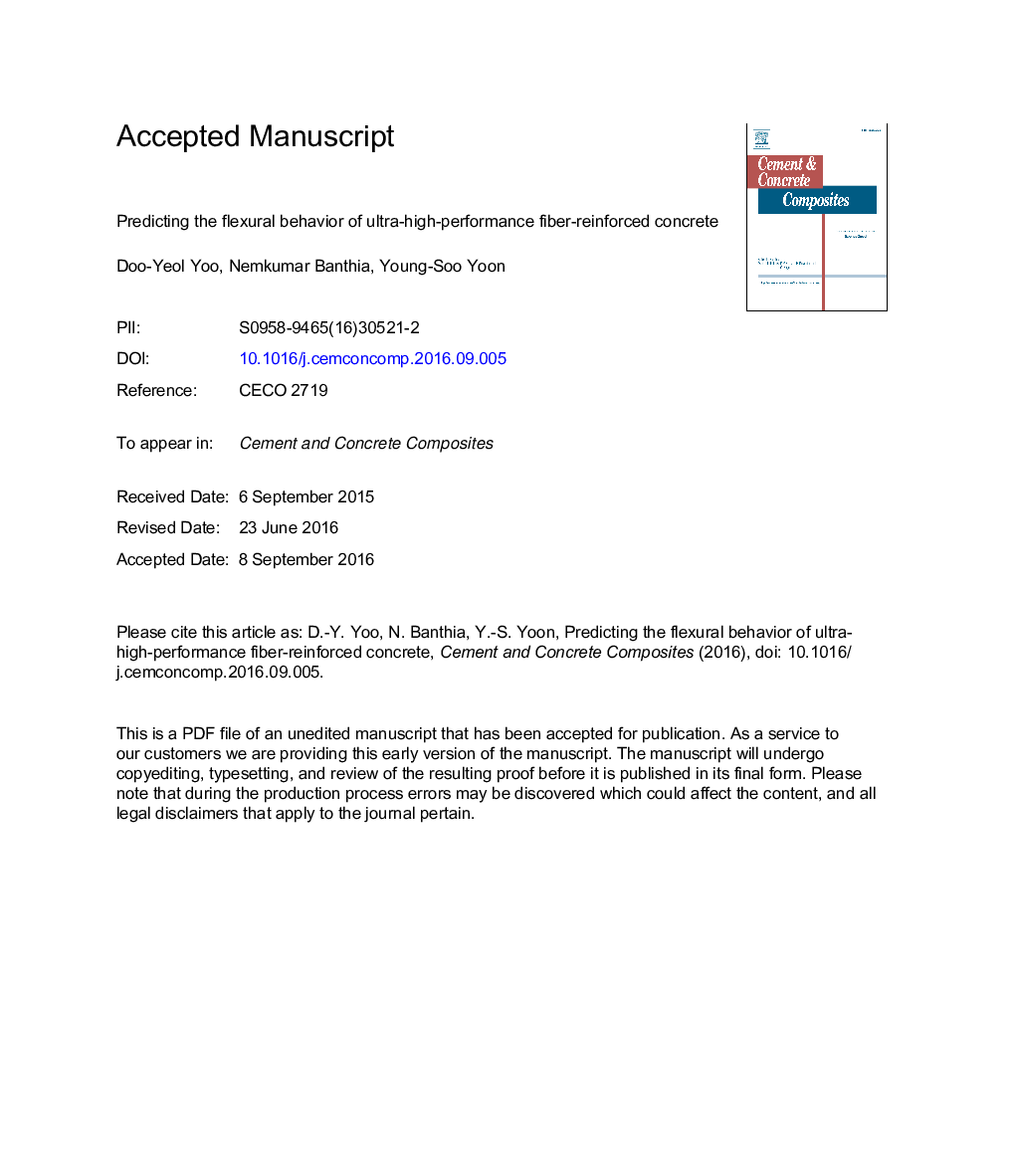| Article ID | Journal | Published Year | Pages | File Type |
|---|---|---|---|---|
| 5436964 | Cement and Concrete Composites | 2016 | 40 Pages |
Abstract
To predict the flexural behavior of ultra-high-performance fiber-reinforced concrete (UHPFRC) beams including straight steel fibers with various lengths, micromechanics-based sectional analysis was performed. A linear compressive modeling was adopted on the basis of experiments. The tensile behavior was modeled by considering both pre- and post-cracking tensile behaviors. Pre-cracking behavior was modeled by the rule of mixture. Post-cracking behavior was modeled by a bilinear matrix softening curve and fiber bridging curves, considering three different probability density functions (PDFs) for fiber orientation, i.e., the actual PDF from image analysis and PDFs assuming either random two-dimensional (2-D) or three-dimensional (3-D) fiber orientation. Analytical predictions using the fiber bridging curves with the actual PDF or the PDF assuming 2-D random fiber orientation showed fairly good agreement with the experimental results, whereas analysis using the PDF assuming 3-D random fiber orientation greatly underestimated the experimental results.
Keywords
Related Topics
Physical Sciences and Engineering
Engineering
Industrial and Manufacturing Engineering
Authors
Doo-Yeol Yoo, Nemkumar Banthia, Young-Soo Yoon,
